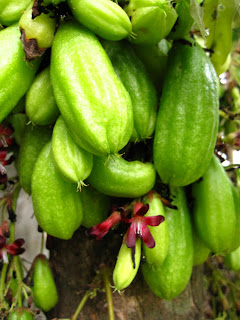I am referring to sour-y persons. An encounter is enough to pucker up one's heart in grimace. And that's not all. Being one attracts the worse kind of vibes.
If you try this little experiment, you will see what I mean.
Pour out a little vinegar in a saucer.
Now place this saucer outside-- maybe in your garden or out in the open air.
I’d bet that the first visitor to your sour offering would be a fly. And I’d bet that at least 1 big fly will then drop by to take a sip or two.
I try to remember this experiment every time I find myself transformed into a saucer of vinegar-- snapping at people's simple inquiries or making snide remarks at someone's inadequacies.
And what good are sour-y persons anyway? Amazingly, I was able to think of an outstanding feature. These persons enable others to highlight and appreciate even more the sweeter things in life. For with the presence of ugliness, we know beauty; with the dark, we know the light. It stands without reason that meeting up with sour-y people, we know sweetness.
===================

Going back to the topic of sourness, my kamias tree is presently heavy with fruit-- again. Usually, I use kamias when making "Paksiw na Isda".

This time, after going through some of my recipe books for inspiration, I decided to try kamias instead of sampalok (tamarind) in my sinigang (sour soup) dishes. To my surprise, I found that the use of kamias highlighted the mingling of flavours in my sinigang broth. So the next time you are thinking of serving sinigang for lunch, substitute your tamarind sauce with kamias. It's so easy:
Wash about a cupful of kamias. Drop in a small saucepan; cover with water and bring to a boil. Once boiling, lower the flame to create a simmer. After about 20 to 30 minutes, your kamias would be very tender. Now drain fruit of water and set the water aside. Mash each fruit through a fine sieve and add a spoonful of the water it was boiled in from time to time. You can then throw the pulp and the resulting sauce is what you can then add to your soup-- same way you process with sampalok.
You are sure to get a smile out of anyone trying your sour soup.

No comments:
Post a Comment